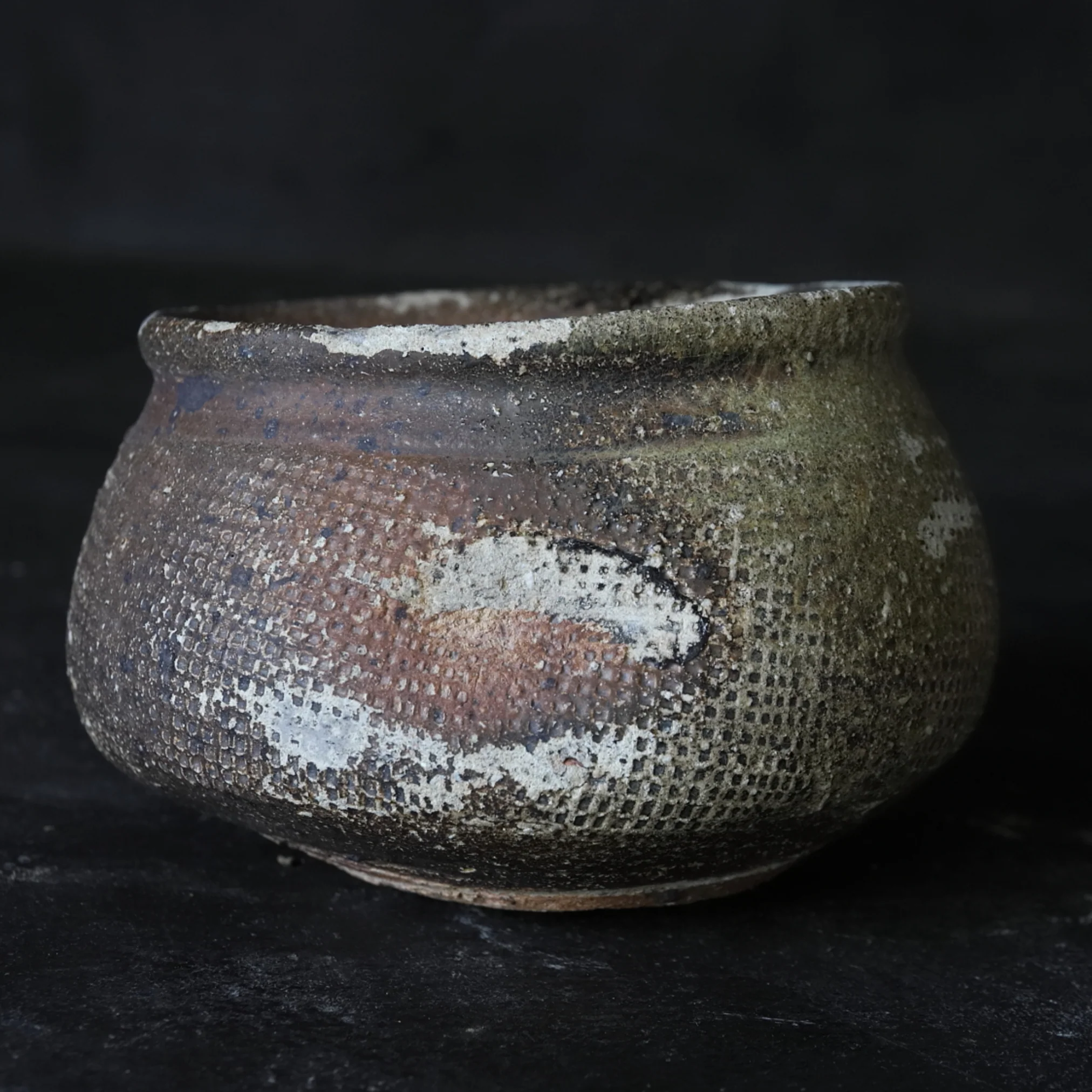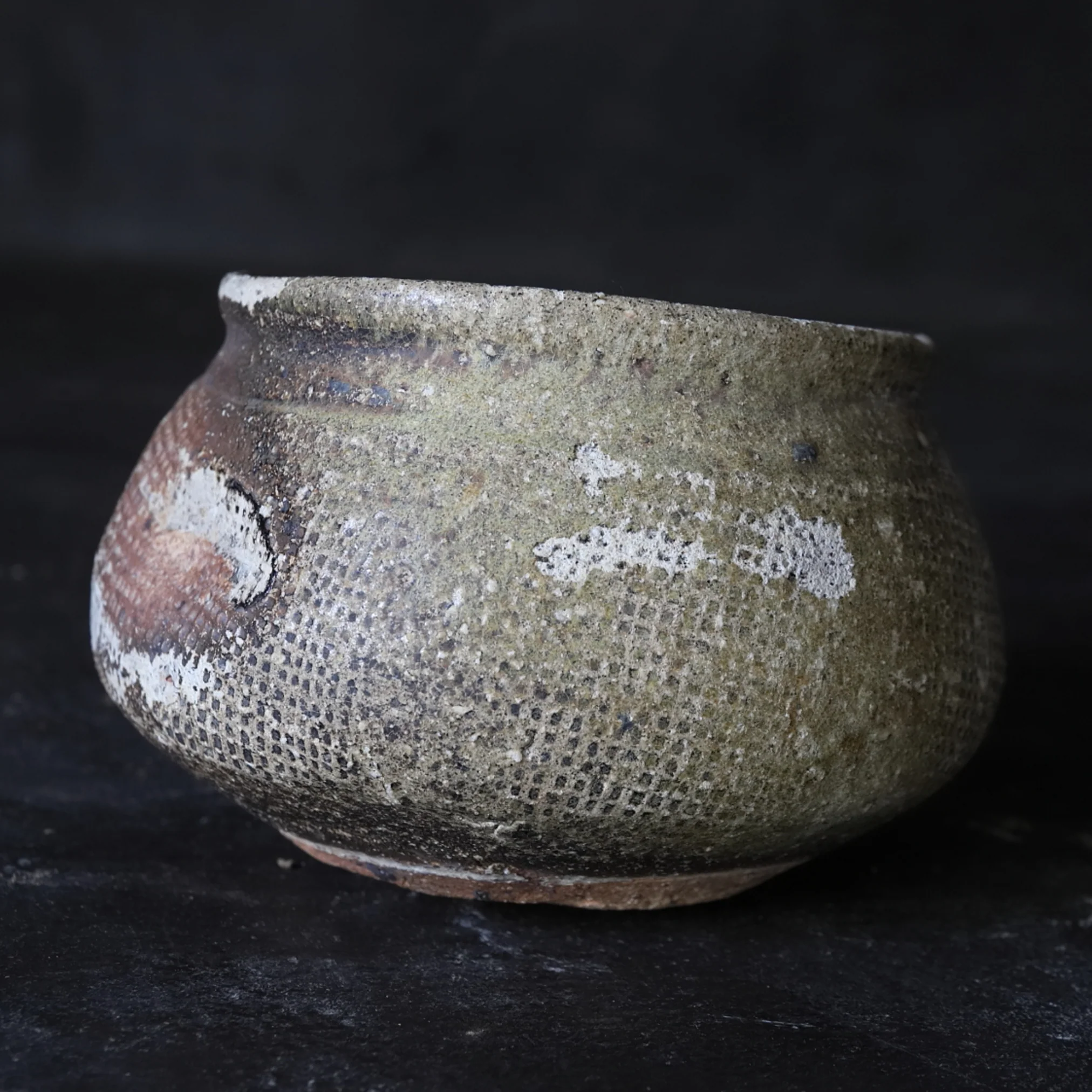


























Silla earthenware jar with autumnal grass motif Silla period/668-900CE
Tax excluded. Shipping calculated at checkout
The origins of yakishime pottery can be traced back to the hard earthenware known as hai-tou (unfired clay pottery) that dates back to the Yin dynasty in ancient China. The technique of firing yakishime pottery at high temperatures in large anagama kilns was passed on to Silla, a kingdom that was trying to unify the Korean Peninsula during the Three Kingdoms period.
This is a very rare piece of Silla pottery with grass patterns carved all over it. It is probably an autumn grass pattern. As it is an excavated item, there are skeins visible, but it is in good condition and has retained its perfect shape. As a flower vase, it has the appearance of inviting wild flowers. A phenomenon unique to pottery is that if water is left in it for a long time, the entire surface of the vessel becomes damp. Also, when it absorbs water, it gives off a strong earthy smell that is unique to ancient pottery.
This is a very rare piece of Silla pottery with grass patterns carved all over it. It is probably an autumn grass pattern. As it is an excavated item, there are skeins visible, but it is in good condition and has retained its perfect shape. As a flower vase, it has the appearance of inviting wild flowers. A phenomenon unique to pottery is that if water is left in it for a long time, the entire surface of the vessel becomes damp. Also, when it absorbs water, it gives off a strong earthy smell that is unique to ancient pottery.
W16 x D16 x H8cm
商品写真を多数掲載しておりますので、詳細や状態をぜひご確認ください。ご不明な点がございましたら、お気軽にお問い合わせ下さい。
Choose options



























Silla earthenware jar with autumnal grass motif Silla period/668-900CE
Sale priceR 18,926.00 ZAR






















